
Cancer is the second leading cause of death in the United States. Since the 1960's cancer survival rates have improved and progress has been made in treatments, causing a huge population of cancer survivors. The most prevalent form of cancer for females is breast cancer. Many women now survive breast cancer for months, or years, or are cured of the disease for the rest of their life. Treatment for breast cancer can be difficult to recover from physically and mentally. Exercise is an excellent means to breast cancer recovery and prevention.
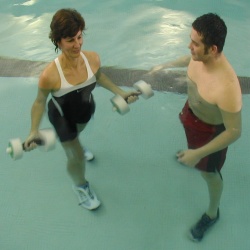
There is a growing demand for Aquatic Personal Trainers with expanding opportunities. Specialized training will allow you to enter the field with confidence, skill, and knowledge maximizing your potential for hire.
You can't just do land exercise in the water- it is not effective! This certificate program consists of 4 eLearning courses to help you build a strong foundation for personal training in the water. Understanding the principles of the water, how water affects human movement, the effects of submersion on the body and cardiorespiratory system, and recommended movement and formats for aquatic exercise provides knowledge to enable you to build safe and effective programs to get client results!
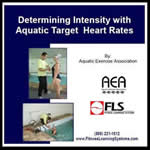 By Aquatic Exercise Association (AEA)Improve the quality of your cardiorespiratory workouts for your clients! Learn how to have your clients working in their target heart rate zones to maximize weight loss and effectively improve function. This course provides evidence based methodology and practice for the often confusing guidelines for aquatic heart rate deductions. Generally accepted equations and methods are provided with easy-to-follow explanations and practice equations. After completing this course you will be able to determine and apply aquatic target heart rates for safe and effective exercise intensity.
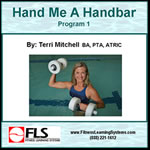 By Terri Mitchell, PTA, BA, ATRIHand Me a Handbar is an introduction to safely using buoyant equipment in the water to enhance and add variety to aquatic fitness workouts. Each video shows a basic move, as well as progressions and options for changing the stance or active movement of the legs or arms to add challenge or variety. Several ideas are presented in this course for handbar use. Add spark to your handbar workouts.
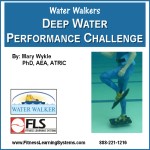 By Mary O. Wykle, Ph.D.Add new dimension and variety to your deep water programming. Strap on some Water Walkers and offer advanced programming for your fit clients. Options for Cadence Training and Insanity Intervals are provided. Videos and explanations provided with the exercises, and 2 sample programs included. Feel the benefit of drag resistance to kick up your deep water programming options.
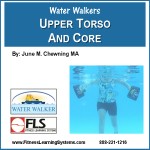 By June Lindle-Chewning, BS, MAWater Walkers aren't just for your feet anymore! This course takes the water walkers off the feet and onto the hands for an upper torso and core workout that is hard to beat. This workout is best performed standing in shallow water with no flotation equipment. Enhance your lower torso water walker workout with some great upper torso and core training options with drag resistance that takes on a whole new dimension. Videos provided for upper torso and core exercises.
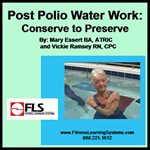 By Mary Essert, BA, ATRI, Vickie RamseyAs a health-fitness professional, you may encounter clients with Post Polio Syndrome. Exercise is important, but can easily cause or accelerate serious problems. It is imperative to understand how to effectively and safely work with these clients without causing harm to occur or symptoms to re-occur. Although this course focuses on water exercise, the information is valuable to land exercise as well. Techniques to increase range of motion, strength, endurance and relaxation are clearly shown. Videos and text emphasize independence and functional fitness as the goal. Learn important guidelines for how to work with clients with Post Polio Syndrome and learn how to help them "Conserve to Preserve" to improve and maintain quality of life.
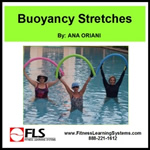 By Ana Oriani, MA, AEA, ATRITake your clients and athletes to a new level of flexibility with Buoyancy Stretches. Learn how to maximize the use of Archimedes' Principle and buoyancy equipment with supine, side, and front working positions. These stretches will enable you to help your client enhance relaxation, breathe more consistently and deeply, and maintain the proper level of body alignment that can help to achieve a fluid and controlled stretch. Exercise videos help with visual descriptions.
 By Maria Sykorova-Pritz, Ed.DThe number of people suffering from chronic pain conditions is growing indicating a need for effective chronic pain management programs. Chronic pain associated health care costs is estimated to be $80 billion each year in the USA alone. People suffering from chronic pain need to be fully educated about the process of managing pain. Knowledge is power for the chronic pain sufferer. With the information and techniques presented in this course, you as a health-fitness professional can increase your client's ability to manage chronic pain.
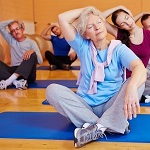 By June Lindle-Chewning, BS, MA, Tina Schmidt-McNulty MS, RCEP, RNBlood pressure is an integral part of the function and health of the cardiorespiratory system. High blood pressure (Hypertension), low blood pressure (Hypotension), Pulmonary Hypertension, and Preeclampsia all have implications for safe and effective exercise prescription.
This course provides knowledge for understanding the anatomy and physiology of blood pressure and its role in health. It teaches you how to screen for blood pressure and provides exercise training and special considerations for clients with blood pressure disease.
Learn guidelines to provide individualized exercise recommendations to help clients prevent or delay hypertension. In addition, this course guides the health-fitness professional to help clients with blood pressure disease to safely and effectively exercise to help control the disease.
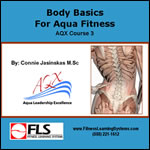 By Connie Jasinskas M.Sc.Body Basics for Aqua Fitness is designed to give you fundamental knowledge about functional anatomy, kinesiology, and physiology related to vertical aquatic training (aqua fitness). This course (AQX Course 3) explains muscle roles and priorities, key training principles, as well as physiology of vertical immersion. Over 71 videos and several interactive and printable activities. Whether you are working with sports teams, post-rehabilitation groups, aquatic personal training, or seniors' group aqua fitness, Body Basics for Aqua Fitness is fundamental to your success.
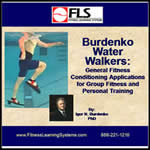 By Igor N. Burdenko
Looking for something new in the water? The Burdenko water walking program is just what you need for group, personal training, or rehab. This program based on the Burdenko Method contains unique exercises using the Burdenko water walker equipment. The program is different, functional, maximizes time efficiency, and makes exercising fun. It is easy to remember, and mimics some sports movements. Videos and text give clear instruction for each exercise. Your clients will love these unique exercises that can make up an entire workout, or be mixed with other more traditional exercises.
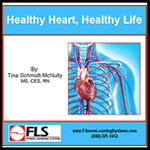 By Tina Schmidt-McNulty MS, RCEP, RN, Tina Schmidt-McNulty MS, RCEP, RNHeart disease and its complications is the leading cause of death in the US for both men and women. Exercise plays an important role in prevention and treatment of heart disease. This course explores risk reduction, prevention, and management of heart disease through lifestyle changes and exercise. Learn how to safely and effectively lead your clients to a healthier heart and a healthier life.
 By Aquatic Exercise Association (AEA)If you are a personal trainer interested in expanding your training options to the water, it is important to learn about the aquatic environment. The water's viscosity provides resistance that surrounds you and provides "work" for every movement in every direction. The water's buoyancy reduces body mass, impact to weight bearing joints, and spinal decompression in deep water. The water's hydrostatic pressure affects many of the body's physiological functions. If you want to be an effective aquatic personal trainer, learn about the special benefits and qualities the aquatic environment has to offer and incorporate that knowledge into your personal training sessions. This course will start you on your way to becoming a successful aquatic personal trainer.
 By Soraya Cates Parr, BS, CPTChronic lower respiratory disease, primarily COPD, was the third leading cause of death in the United States in 2011, according to the CDC. Also, the number of people with asthma continues to grow. Learn guidelines for working with pulmonary dysfunctional clients, breathing exercises, and how to help overcome the fear that accompanies an increased demand on the respiratory system. Learn how to effectively help these clients improve function and quality of life.
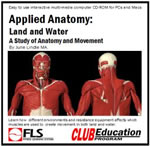 By June Lindle-Chewning, BS, MAApplied anatomical movement can be confusing for any health-fitness professional. This easy to use multimedia course advances your knowledge of basic human movement, muscle use, types of contractions, and the muscle equation for both land and water environments. Deepen your understanding of concentric/eccentric action as it pertains to specific movements and equipment use on land and in water. Gain confidence in understanding the purpose of every exercise you prescribe so you can provide safe and effective programming for your group fitness and one-on-one clients.
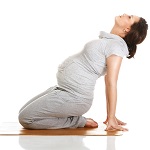 By Danielle Noblitt Spangler BS, NASM, Certified Applied Functional Science Gray InstituteThe female body is structurally different from the male body both anatomically and in its need for pelvic alignment and health. Working with the female body before, during, and after pregnancy requires a working knowledge of female anatomy in all three stages to prepare, accommodate, and restore a woman's body to alignment and health.
This course reviews female anatomy and the anatomy of pregnancy to guide you with pregnant clients. Learn the importance of breathing and posture, guidelines for exercise, contraindications, special considerations, and safe exercises for pregnant clients. Knowledge is key to safety and effectiveness in exercise for your pregnant clients.
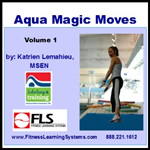 By Katrien Lemahieu, MESNOver 100 videos of new moves!
You will never run out of aquatic moves and variations for personal training or all levels of group fitness with this exceptional choreography course by Katrien Lemahieu. You are provided with dozens of variations for three base moves: a Jumping T-Jack, a Soccer Jog, and a Tango Twist. Variations include leg variations, arm variations, additional variations, and crazy combinations. Special attention is placed on basic knowledge and careful consideration for safe and effective transitions in the aquatic environment. This course is packed with videos to help you with pool and deck instruction, and to help you see and practice these innovative moves. You will never approach your aquatic exercise choreography the same!
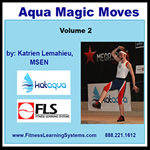 By Katrien Lemahieu, MESNOver 100 videos of new moves!
Welcome to the second Aqua Magic Moves course! Aqua Magic Moves is designed to help instructors combine arm and leg patterns and make them into new exercises. They have the Magic to be executed in so many different ways that you will never run out of choreography ideas. There is theory included, cue recommendations, and other information you can use to execute the moves and understand the philosophy behind the system. You are provided with dozens of variations for three base moves: a Circle Ski 3, Corner Kick, and Rocking Mambo. This course is packed with videos to help you with pool and deck instruction, and to help you see and practice these innovative moves. You will never approach your aquatic exercise choreography the same!
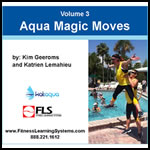 By Kim Geeroms, Katrien Lemahieu, MESNKatrien Lemahieu is back at it again for Aqua Magic Moves 3 teaming up with Kim Geeroms. Kim and Katrien (K2) provide a unique way to construct aquatic choreography that results in "magic moves" which can be used in choreography for the unfit through trained athletes. You can adapt these moves to your client base, intermix them into your existing chorography for an extra challenge, or use them to promote coordination to "train the brain." There are so many options for using Aqua Magic Moves that you will never run out of choreography ideas and challenges. Over 50 videos to help you learn the moves!
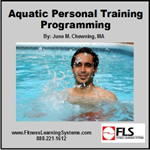 By June Lindle-Chewning, BS, MAIf you are a personal trainer interested in expanding your training options to the water, it is important to learn about the aquatic environment. Increase your success by understanding the properties of the water and aquatic physiological responses. This course teaches you training formats that work well in the aquatic environment as well as shallow and deep water exercise techniques. It also addresses the proper way to monitor and manipulate intensity in the aquatic environment, a skill critical to the success of your client reaching his/her goals.
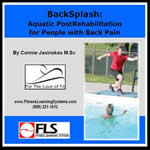 By Connie Jasinskas M.Sc.Over 80% of the U.S. population suffers from low back pain at some time in their life, some with chronic low back pain issues. Most low back pain is attributed to muscle imbalance and is relieved and prevented by a properly executed exercise program conducted by a knowledgeable professional. This course shows how vertical aquatic exercise can be used in post-rehabilitation for back pain by aquatic rehabilitation practitioners, as well as aquatic leaders providing individual or group exercise for this population. Videos and pictures give you a clear understanding of the exercises and progressions shown in the course. If you want to get exceptional results with your back pain clients, this course is a must!
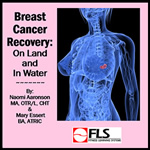 By Naomi Aaronson, MA, OTR/L, CHT, Mary Essert, BA, ATRIThere are over 2 million breast cancer survivors in the United States today. Due to the ramifications of treatment, exercise is a modality that can be used to facilitate recovery. Numerous studies have demonstrated that exercise can improve quality of life, reduce side effects of treatment, and improve strength and endurance. This course will help health-fitness professionals understand diagnosis, treatment, and ongoing care for cancer patients and survivors. Important guidelines and information are provided for safe and effective exercise through course and multimedia content. Embrace this client base with practical exercise options to improve recovery and function.
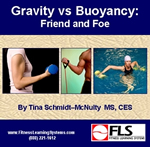 By Tina Schmidt-McNulty MS, RCEP, RNExplore the basic properties of gravity and buoyancy and how they affect movement and equipment use on land and in the aquatic environment. Exercise and equipment options are given for all primary muscle groups for land and water resistance training exercises using weights, tubing, buoyant and drag equipment. This course is an easy to access, comprehensive library of resistance training exercises with over 70 videos, written explanations, variations and safety information beneficial to both land and aquatic health-fitness professionals.
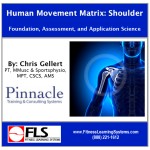 By Chris Gellert, PT, MMusc & Sports Physio, MPT, CSCS, C-IASTMThe shoulder is one of the most vulnerable joints in the body due to its vast range of motion and complexity. This course is developed to assist the health-fitness professional with a deeper understanding of the functional anatomy, mechanics, and assessment of the shoulder. Improve your knowledge and skills gaining a competitive edge by successfully working with clients with shoulder dysfunction within a safe and effective scope of practice.
 By Terri Mitchell, PTA, BA, ATRI, Julia Meno-Fettig, BS, CTRS, ATRIPNF is characterized by mass movement patterns that are spiral and diagonal. You use PNF patterns of movement and components of them in most of your functional daily activity. This course offers basic educational information regarding proprioceptive neuromuscular facilitation techniques appropriate for performance in the aquatic environment to use with all levels of clients. See text, photos and video demonstrations as the authors teach PNF movements for use in therapy and fitness environments, one-on-one or in group fitness applications. PNF training helps your clients maintain important functional movement patterns.
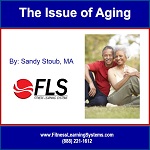 By Sandy Stoub, BA, MAThis course provides an important overview of aging through physiological, psychological, and sociological perspectives. With a thorough understanding of the aging body, a health-fitness professional can design effective programs to meet the needs of students. Videos and exercise descriptions are included for chair and standing exercises as well as exercises for in the water. Meet the demands of this growing population with safe and effective exercise options.
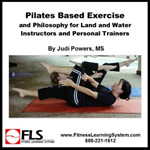 By Judi Powers, MSThis course introduces the teachings and movements of Joseph H. Pilates. It outlines the popular neuro-muscular floor exercises that stretch and strengthen muscles and promote better posture, using science to better understand the core and stabilizing techniques used in this type of training. Add these exercises to your tool bag to provide diversified programming for your group and one-on-one exercise applications.
 By Monique Acton, MS, Laurie Denomme, B. Kinesiology, Judi Powers, MSThis course is the first module of a two-part series. Aquatic Options was specifically designed for aquatic fitness professionals, Personal Trainers, Physical Therapy Assistants, Occupational Therapy Assistants, Recreational Therapists, and any professional working with special populations and post rehab individuals in the aquatic environment. This course will review important fitness training guidelines and help you better understand how to integrate progressive aquatic fitness exercises for shoulder, knee and hip orthopedic considerations and low back pain.
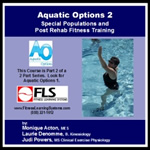 By Monique Acton, MS, Laurie Denomme, B. Kinesiology, Judi Powers, MSThis course is the second module in the Aquatic Options series. Aquatic Options was specifically designed for aquatic fitness professionals and any professional working with special populations and post rehab individuals in the aquatic environment. In this course you will learn modifications for participants with specific medical conditions including arthritis, diabetes, hypertension, and obesity, and be introduced to the assessment, evaluation, documentation, and reporting process. Choose appropriate equipment for all of the populations, and be able to design your own safe and effective aquatic fitness programming.
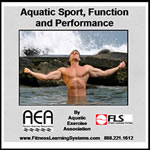 By Aquatic Exercise Association (AEA)Whether designing aquatic programming for the professional athlete, the "armchair" athlete, or somewhere in between, this course will provide numerous options for improving performance and functional capabilities using creative and carefully developed aquatic exercise. The focus is on formatting for optimum efficiency in relation to a variety of student goals: sports related, recreational activity, or daily function. Participant goals, muscle involvement and equipment interaction are considered, along with movement patterns to improve performance and enhance exercise retention at any level of activity or sport.
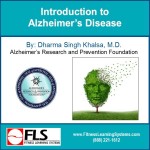 By Alzheimer's Research and Prevention Foundation (ARPF)At this time, there is no cure for fatal Alzheimer's disease and prevention is key to avoiding this 6th leading cause of death in the U.S. Fitness has been found through research to be instrumental in prevention. As the world population continues to grow and live longer, the issues of accompanying cognitive decline, dementia, and fatal Alzheimer's disease are becoming more prevalent, significantly impacting quality of life, health care systems, and the economy of many countries.
This course provides important information to help you understand cognitive decline and Alzheimer's relevant to anyone working as a health-fitness professional. It focuses on causes, risk factors, diagnosis, care partners, The 4 Pillars of Alzheimer's Prevention™, and preventive mental exercise.
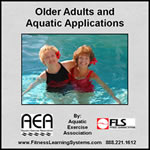 By Aquatic Exercise Association (AEA)Older Adults comprise the fastest growing segment of the American population and aquatic exercise can help them maintain functional fitness and independent living skills. A thorough review of the physiological aspects of aging in this course will introduce aquatic fitness professionals to important considerations for providing safe and effective programming for the older adult population. This course includes programming and exercise descriptions with videos for three levels of senior aquatic programming to help you reach the needs of ALL older adults!
 By American Academy of Sports Dietitians and Nutritionists (AASDN)The percentage of consumers (your clients) who actively seek information about nutrition and healthful eating has more than doubled from 19% in 2000 to 46% in 2011. It is important for health-fitness professionals to be properly qualified and guided to join the fight against obesity with science-based information and counsel for clients following the Academy of Nutrition and Dietetics (AND) guidelines.
The AASDN creates a fundamental understanding of science-based nutrition concepts in this course. The goal is to allow you to be able to better separate the science-based food and nutrition information from the plethora of misinformation, to properly advise and communicate about nutrition with your clients.
 By Anna Shay-McEnteeAdvance your client's development of correct breathing technique, body awareness, body alignment and body placement in the execution of Advanced Aqua Pilates exercises. The results are improved core strength, control, stability and flexibility. Excellent videos, images, and exercise explanations are included to help you teach these exercises for maximum results. Provide your clients with variety and diversity with Advanced Aqua Pilates exercises. (Also see Essential Aqua Pilates.)
 By Anna Shay-McEnteePilates and Aqua exercise are two of the fastest growing exercise programs in the world. They offer programs to suit the exercise needs for people of all ages and all levels of fitness. Pilates performed in the water engages the upper and lower extremities through optimal ranges of motion while minimizing stress on the joints, resulting in a unique combination of exercise and physiotherapy. Learn how to teach correct breathing technique, body awareness, body alignment and body placement in the execution of these unique exercises. Excellent videos, images, and exercise explanations are included to help you teach these exercises for maximum results. Provide your clients with variety and diversity with Essential Aqua Pilates exercises.
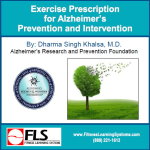 By Alzheimer's Research and Prevention Foundation (ARPF)At this time, there is no cure for fatal Alzheimer's disease and prevention is key to avoiding this 6th leading cause of death in the U.S. Fitness has been found through research to be instrumental in prevention. As the world population continues to grow and live longer, the issues of accompanying cognitive decline, dementia, and fatal Alzheimer's disease are becoming more prevalent, significantly impacting quality of life, health care systems, and the economy of many countries.
This course reviews statistics, definitions, risk factors, and stages of disease progression. The primary focus of this course is evidence-based preventive physical exercise for prevention and intervention. Exercise guidelines and considerations are provided and sample programs are included.
Not approved by your
certifying organization?
Our courses are very affordable
even when you use our easy
petition process.
Click Here for Additional Information about
Continuing Education Approval
- As an IACET Authorized Provider, Fitness Learning Systems offers CEUs for its programs that qualify under the ANSI/IACET Standard.
- ACSM: American College of Sports Medicine's Professional Education Committee certifies that Fitness Learning Systems meets the criteria for official ACSM
Approved Provider status from (2018 – 2020). Providership # 652725. ACSM approved providership of this program does not imply
endorsement of the sponsoring organization's products/services.
FLS courses are more affordable than
many other home study courses even with a petition
fee!
|